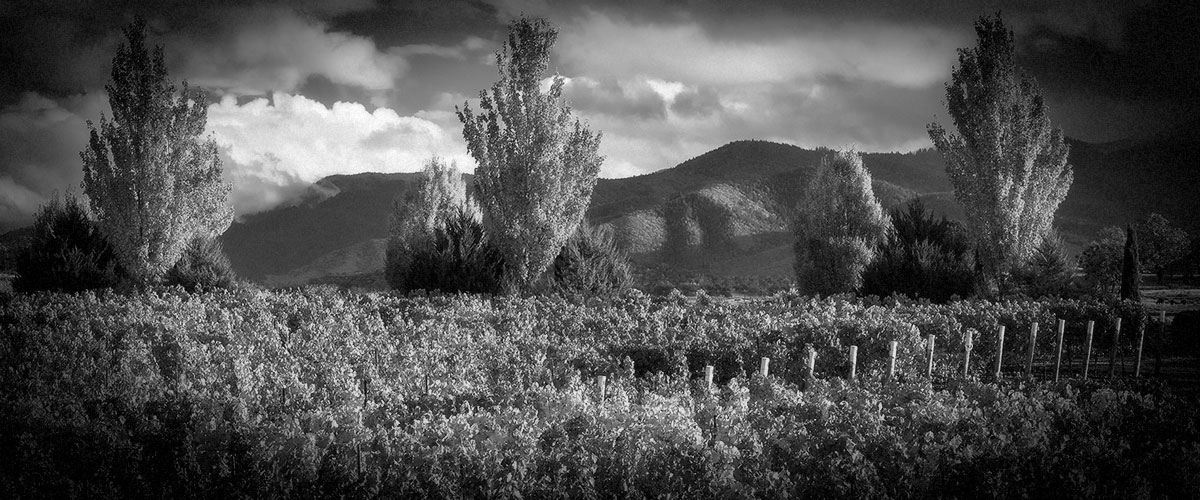by Chris Russell, Contributor
Late summer and fall represent a magical time in the vineyard, with row after row of vines brimming with fruit slowly approaching ripeness. But how do we know when it’s the perfect time to harvest the grapes? It’s a harder question than it may seem, with weather, variety, desired wine style, and even the winemaker’s personal preferences and experiences each playing a role. Like most aspects of the winemaking process, it’s a combination of science, experience, and intuition.
Sugar
During the ripening process, grapes become sweeter as they stockpile natural sugars in their pulp and skins. Yeast ferments these sugars—mostly glucose and fructose—into alcohol, so the sugar content of the grapes is one of the factors we assess as they ripen. We need our dry wines to reach 10% alcohol by volume (ABV) to be stable microbiologically, though in most cases we want a little bit more than that.
In the field, we can use a refractometer—a handy device that measures how light is bent as it passes through a drop of juice—to quickly check the sugar content of the grapes. This allows us to keep a close eye on the ripening process. The sugar level we’re seeking varies with variety and wine style, but we’re generally looking for 18–24 °Brix, which would finish up at 10–14% ABV.
Acidity
Acidity is the other side of the coin: as the grapes ripen and sugar levels rise, acidity declines. We need the right level of acidity in the wine to keep it balanced and vibrant. Harvesting too early or late still results in wine but one that needs the acidity adjusted to reach its full potential. As the grapes ripen, we start bringing in samples from the field more frequently and processing them into must—a mixture of skins, seeds, stems, and juice—for analysis. The sugar and acidity in the must can then be measured, in addition to several other factors mentioned below.
Taste & Smell
Tannins
Red wines are fermented in contact with the grape skins, so with reds, we pay extra attention to the ripeness of the skins themselves. The astringent tannins present in the skins mellow and soften with ripening, allowing the skins to take on a noticeably sweeter character. This ensures our red wines will have the right character and be free of bitter or tart flavors.
Learn More
That’s just a glimpse into the many details we consider when determining the best time to harvest our grapes. Future posts will delve more deeply into other aspects of the winemaking process. Anything in particular you’d like to learn? Please let us know!
Meanwhile, if you’d like to know more about our Rogue Valley wines, here are a few ways:
- Once the grapes have been harvested, it’s time to make wine! Learn the basics of how wine is made.
- Stop in the tasting room to try our current wines.
- Follow us on Facebook and Instagram to keep up with the latest happenings.

